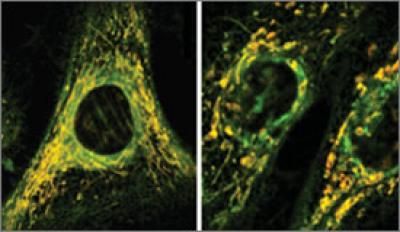Kill the germs, spare the ears: Study shows how to create effective antibiotics that don’t damage hearing
Apramycin, already used in animals, shows promise against drug-resistant TB and other “superbugs”, without hearing loss
The world needs new antibiotics to overcome the ever increasing resistance of disease-causing bacteria – but it doesn’t need the side effect that comes with some of the most powerful ones now available: hearing loss. Today, researchers report they have developed a new approach to designing antibiotics that kill even “superbugs” but spare the delicate sensory cells of the inner ear. Surprisingly, they have found that apramycin, an antibiotic already used in veterinary medicine, fits this bill - setting the stage for testing in humans.
In a paper published in the Proceedings of the National Academy of Sciences, a team from Switzerland, England and the University of Michigan show apramycin’s high efficacy against bacteria, and low potential for causing hearing loss, through a broad range of tests in animals. That testing platform is now being used to evaluate other potential antibiotics that could tackle infections such as multidrug-resistant tuberculosis.
The research aims to overcome a serious limitation of aminoglycoside antibiotics, a class of drugs which includes the widely used kanamycin, gentamicin and amikacin.
While great at stopping bacterial infections, these drugs also cause permanent partial hearing loss in 20 percent of people who take them for a short course, and up to 100 percent of people who take them over months or years, for example to treat tuberculosis or lung infections in cystic fibrosis.
U-M researcher Jochen Schacht, Ph.D., a professor of biological chemistry and otolaryngology and director of the Kresge Hearing Research Institute at the U-M Medical School, has spent decades studying why these drugs cause this “ototoxicity” – a side effect that makes doctors hesitant to prescribe them. Hearing damage has also caused patients to discontinue treatment before their antibiotic prescription is over, potentially allowing drug-resistant strains of bacteria to flourish.
Schacht has found that the drugs produce damaging free radicals inside the hair cells of the inner ear. Hair cells, named for the tiny sound-sensing hairs on their surface, are the linchpin of hearing – and once destroyed, cannot be regrown.
In the new paper, Schacht and his research group joined teams led by University of Zurich microbiologist Erik Böttger, and structural biologist and Nobel Prize winner Venkatraman Ramakrishnan of England’s Medical Research Council Laboratory of Molecular Biology, as well as scientists from ETH Zurich. Each team brought its particular expertise to the issue, and after four years of work they developed and tested this new approach to designing antibiotics.
Organizations
Other news from the department science

Get the life science industry in your inbox
By submitting this form you agree that LUMITOS AG will send you the newsletter(s) selected above by email. Your data will not be passed on to third parties. Your data will be stored and processed in accordance with our data protection regulations. LUMITOS may contact you by email for the purpose of advertising or market and opinion surveys. You can revoke your consent at any time without giving reasons to LUMITOS AG, Ernst-Augustin-Str. 2, 12489 Berlin, Germany or by e-mail at revoke@lumitos.com with effect for the future. In addition, each email contains a link to unsubscribe from the corresponding newsletter.

















































